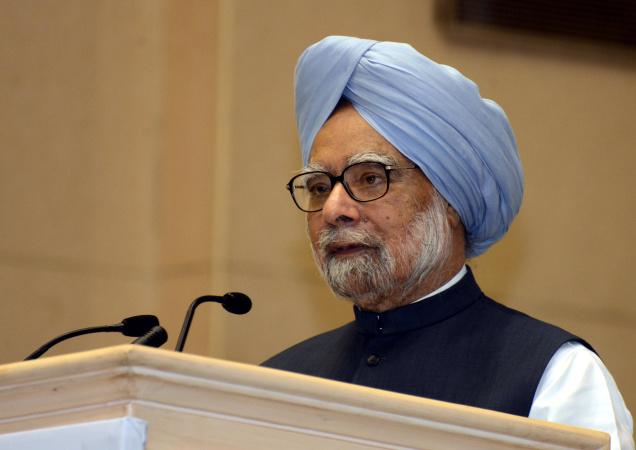 New Delhi, August 24; While recognising the close linkages between the economic environment and the media, Prime Minister Manmohan Singh has said that in the ‘tussle between bottom-lines and headlines’, media organisations must not lose sight of their ‘primary directive’. This was its role of holding up a ‘mirror to society’, and helping ‘provide a corrective’.
New Delhi, August 24; While recognising the close linkages between the economic environment and the media, Prime Minister Manmohan Singh has said that in the ‘tussle between bottom-lines and headlines’, media organisations must not lose sight of their ‘primary directive’. This was its role of holding up a ‘mirror to society’, and helping ‘provide a corrective’.
Dr Singh was speaking at the opening of the National Media Centre, which he jointly inaugurated with United Progressive Alliance (UPA) chairperson, Sonia Gandhi. Located in central Delhi, the NMC will host the office of the Press Information Bureau (PIB), have state-of-the-art infrastructure, a press conference hall, media workroom and video conferencing facilities. The project was first conceptualized in the Eighth Fifth Year Plan, 21 years ago.
Looking back at the growth of the media since the 1990s, the PM said, “The media, not coincidentally, were among the principal beneficiaries of the wave of economic reforms.” Growing economic activity had created the need for ‘better and more intensive communication’. The increased reach of the media also opened up newer markets, ‘which benefited producers and consumers alike’. Dr Singh also highlighted five ‘technological advancements’ enabling media growth – ‘internet, telecom revolution, low cost broadcasting, social media, and cheaper publishing facilities’. Journalism, he recognised, could not be ‘divorced’ from the business of which it is a part.
But the growth brought with it a ‘special responsibility’. The PM emphasised that ‘credibility was the media’s currency’, and was ‘integral to the contract with the reader or viewer’. “A spirit of enquiry must not morph into a campaign of calumny. A witch-hunt is no substitute for investigative journalism. And personal prejudices must not replace the public good.” Dr Singh also flagged the need for ‘mature and wise’ handling of the ‘social media revolution’.
The theme of freedom with responsibility found a place in Ms Gandhi’s remarks, who emphasised on the need to portray ‘news, information and analysis truthfully, objectively and speedily’. Saying that the media made the ‘political establishment uncomfortable’ at times, Ms Gandhi admitted that this was also because they were not ‘able to put forward their view effectively’. The UPA chairperson said that she did not favour ‘propaganda or publicity campaigns’, but people had a ‘right to information…and to make informed decisions’.
Minister for Information and Broadcasting, Manish Tewari, provided an overview of the media industry across platforms. He noted that despite a crisis in the print media globally with ‘iconic newspapers’ shutting down, Indian newspaper market had ‘bucked the trend’ and would grow at 10 percent. The broadcasting sector now had 795 channels, with news channels only occupying seven percent of total TV viewership. The minister reiterated his concern about the skewed, advertisement-dependent revenue models of channels, and hoped that digitization would help address it. With 86.7 crore mobile phones, 12.4 crore internet users, 8 crore people on Facebook, and 1.8 crore on Twitter, Mr Tewari said the new media was truly the ‘medium of the future’.
